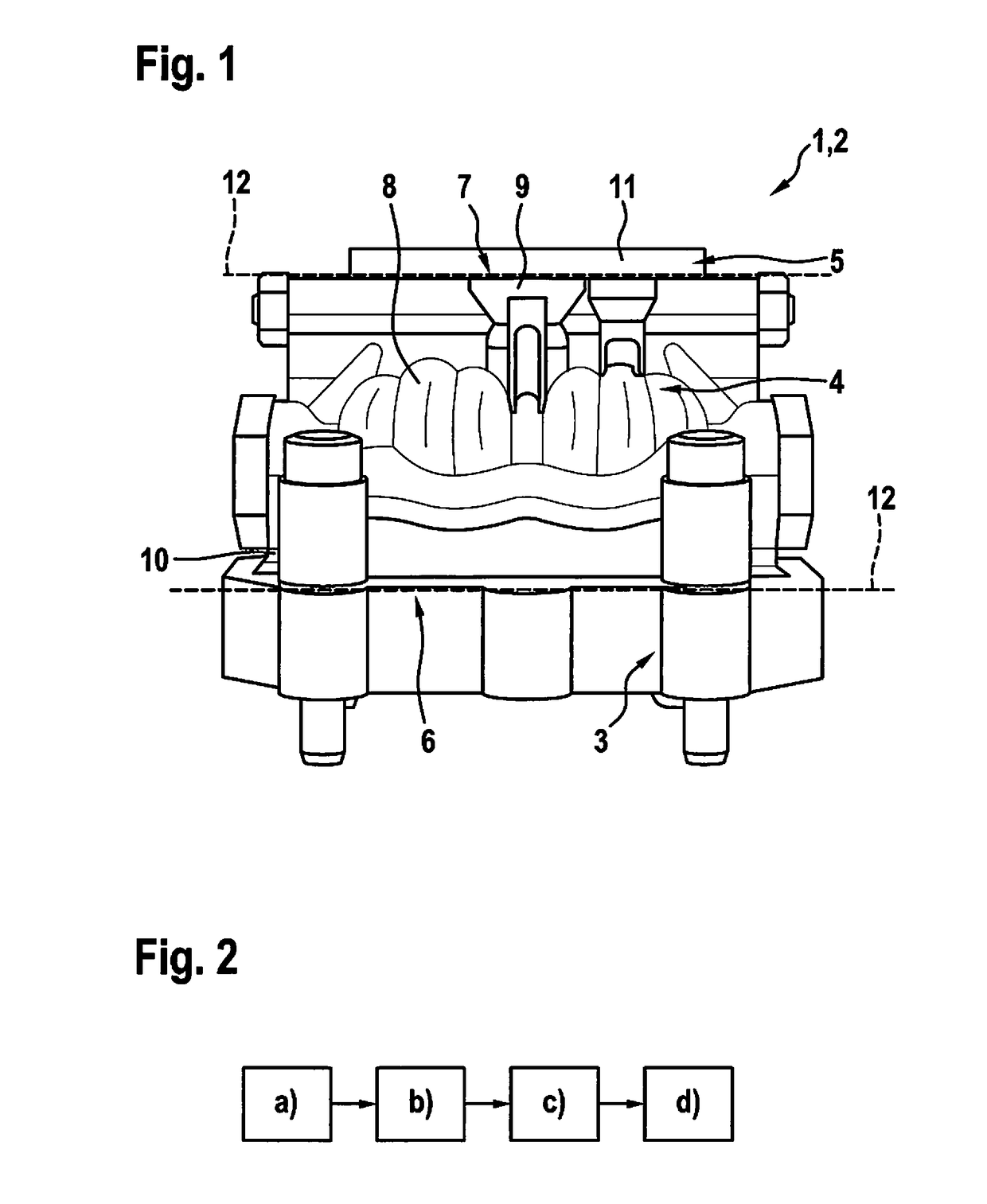Method for manufacturing a three-dimensional product
a three-dimensional product and manufacturing method technology, applied in additive manufacturing, mechanical equipment, additive manufacturing, etc., can solve the problems of frequent rework of constructions in a costly manner, fluid lines in the corresponding sizes and aspect ratios cannot be obtained by casting methods, and the design flexibility is severely restricted
- Summary
- Abstract
- Description
- Claims
- Application Information
AI Technical Summary
Benefits of technology
Problems solved by technology
Method used
Image
Examples
Embodiment Construction
[0056]FIG. 1 shows a product 1 to be manufactured, which is a hydraulic element 2, in particular a servo directional control valve in a 4-directional embodiment. Product 1 has a first section 3, a second section 4, and a third section 5. First section 3 is produced by machining. First section 3 has a first connection point 6 via which first section 3 is connected to second section 4. Second section 4 is produced by an additive manufacturing process where first connection point 6 is used as the substrate. Second section 4 has a second connection point 7 via which second section 4 is connected to third section 5. Third section 5 is produced by machining and has then been connected to second connection surface 7. Second connection point 7 has a receptacle 9.
[0057]Second section 4 has a greater geometrical complexity than first section 3 and third section 5. This is particularly due to the fact that second section 5 includes a duct 8 for a fluid.
[0058]An advantageous selection of separa...
PUM
| Property | Measurement | Unit |
|---|---|---|
| sizes | aaaaa | aaaaa |
| aspect ratios | aaaaa | aaaaa |
| aspect ratio | aaaaa | aaaaa |
Abstract
Description
Claims
Application Information
 Login to View More
Login to View More - R&D
- Intellectual Property
- Life Sciences
- Materials
- Tech Scout
- Unparalleled Data Quality
- Higher Quality Content
- 60% Fewer Hallucinations
Browse by: Latest US Patents, China's latest patents, Technical Efficacy Thesaurus, Application Domain, Technology Topic, Popular Technical Reports.
© 2025 PatSnap. All rights reserved.Legal|Privacy policy|Modern Slavery Act Transparency Statement|Sitemap|About US| Contact US: help@patsnap.com

